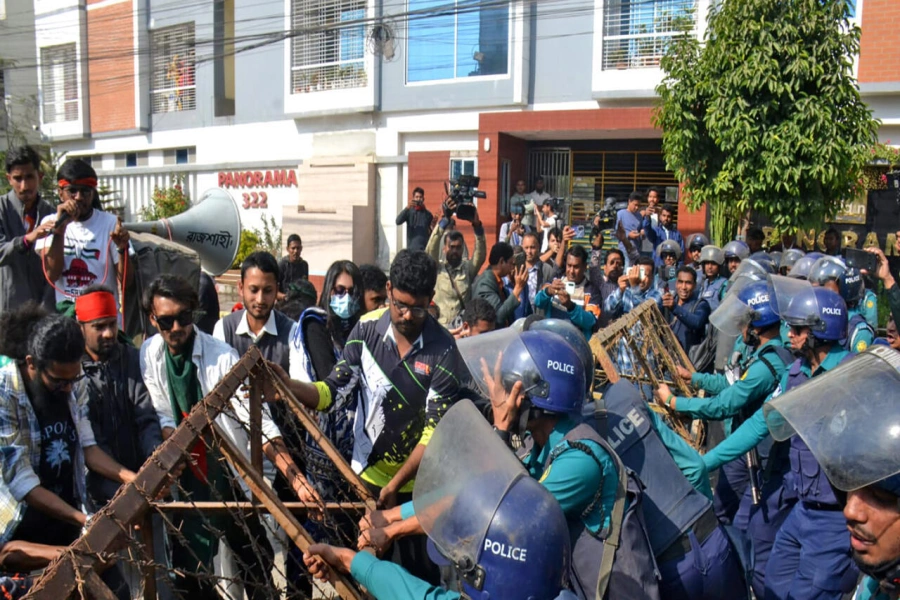ILAM, Dec 12: Like in the previous elections, there were scores of invalid votes during the recently concluded parliamentary and provincial elections. The actual count of invalid votes is yet to be made public by the Election Commission (EC). Some regard this as a direct mockery of the voters' education conducted by the EC.
Despite pouring millions of rupees in voters' education, the attempt to educate voters on proper way of casting vote seems to have been ineffective. Tens of thousands of invalid votes have been recorded across the country during the vote counting so far.
Critics say the EC's strategy to educate voters in rush and without making proper preparation is the major factor. Despite complaints from all quarters, calling for reforms in voters' education in the past, the election body is reluctant to concede that its methods are ineffective.
In Ilam, though the vote counting has concluded, the office is yet to declare the total number of invalid votes cast in the parliamentary and assembly election.
Critics say that the office neither considered it necessary to publish the total number of invalid votes, nor bothered to investigate the reason behind high invalid votes. “We can only think of one reason why the EC did not publish the total number of invalid votes,” said an officer-level staff employed by the EC, speaking on condition of anonymity. “Most probably the data is too embarrassing to make it public.”
High invalid vote despite Rs 750m spent on voter education

The district has 204,046 registered voters of which 135,521 casted their votes in the parliamentary elections of constituency-1 of the district. From these, 130,503 votes were considered valid and the remaining 5,018 votes were considered as invalid. This puts the invalid vote rate for parliamentary election in the constituency at 3.7 percent.
Likewise, for provincial elections in constituency-1 (a) there were 101,061 registered voters, out of which 64,471 had cast their votes. Of them 2,653 votes were considered invalid.
In constituency-2 of the 102,995 registered voters, 71,042 voters exercised their voting rights. The invalid votes in the election during the vote count turned out to be 2,653.
In all the four provinces, the rate of invalid vote stands at 3.41 percent on an average. Higher invalid votes were reported from constituencies where political parties contested the elections by forming electoral alliance.
For instance, CPN-UML and CPN (Maoist Center) formed alliance to contest elections in Ilam constituency-2 (b). This provincial constituency has recorded the highest invalid vote rate. The constituency has 49,270 voters, out of which 32,984 had cast their votes. Of them, 1,300 votes were considered invalid.
According to Chief Returning Officer Krishna Prasad Subedi, the major reason for invalid votes was that the voters used their thumb to stamp the ballot paper instead of using the swastika stamp.
“A large number of invalid votes have thumb impression on the election symbol. Besides them, some voters have stamped multiple symbols. And, there are also those who have put stamp in all the available election symbols,” added Subedi. He said another common error found in the invalid votes is that stamp was not within the election symbol box.
Subedi admitted that the high number of invalid votes were because of lack of education and awareness. “In areas where the education level is good, the number of invalid votes is lesser. And invalid votes were high in areas where education level is lower,” he said.
To decrease the number of invalid votes, the EC had counted votes leniently. In agreement with political parties, those votes, which could be considered agreeable, were not invalidated. Despite being lenient, the number of invalid votes did not go down much.
In fact, the number of invalid votes got even worse than the last elections, which critics claim reflects the inefficiency of the EC's voters' education.
In the last local elections few months ago, 138,565 voters had participated in the elections in Ilam. Out of the total votes cast, as many as 9,165 votes were invalidated.
Likewise, in the second Constitution Elections (CA) elections of 2013, the district had 163,554 registered voters, out of which 127,684 had cast their votes. Of them 120,085 were valid while the remaining 75,099 votes were termed invalid. Under the Proportional Representative category, of the 131,041 votes cast, 4,572 votes were termed invalid again.
Instead of getting better, the number of invalid votes in these parliamentary and provincial elections did not improve. The EC spent over Rs 5 million to teach voters in Ilam how to cast their votes. The election body also spent millions of rupees in awareness campaign through newspaper, television, radio and online mediums, but the outcome do not look promising.

































